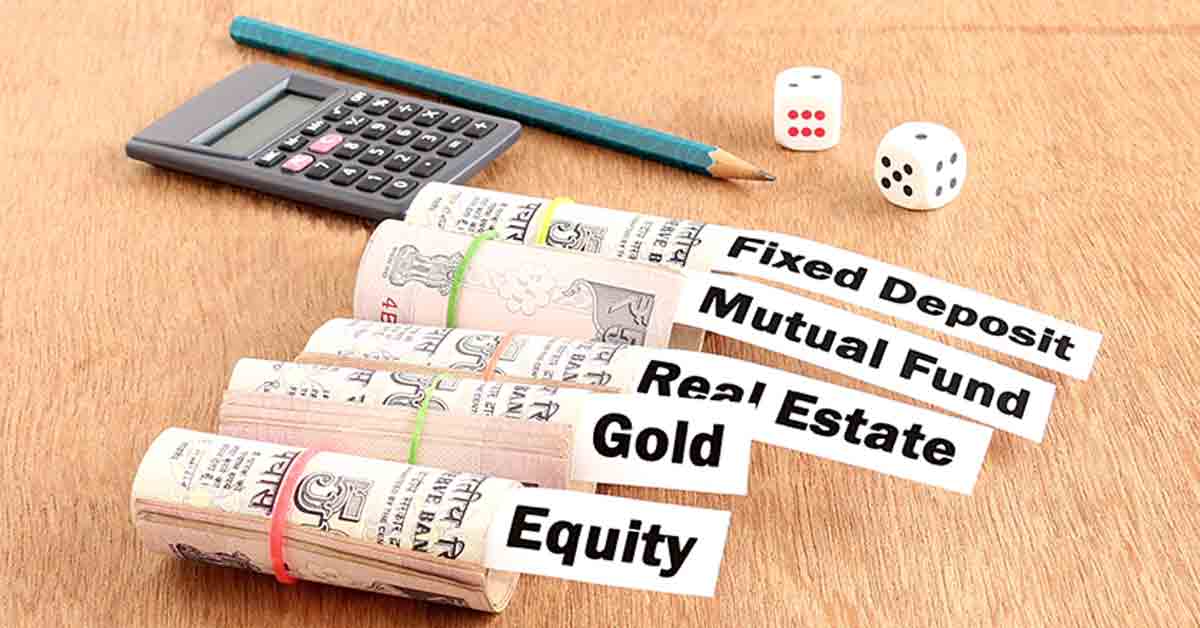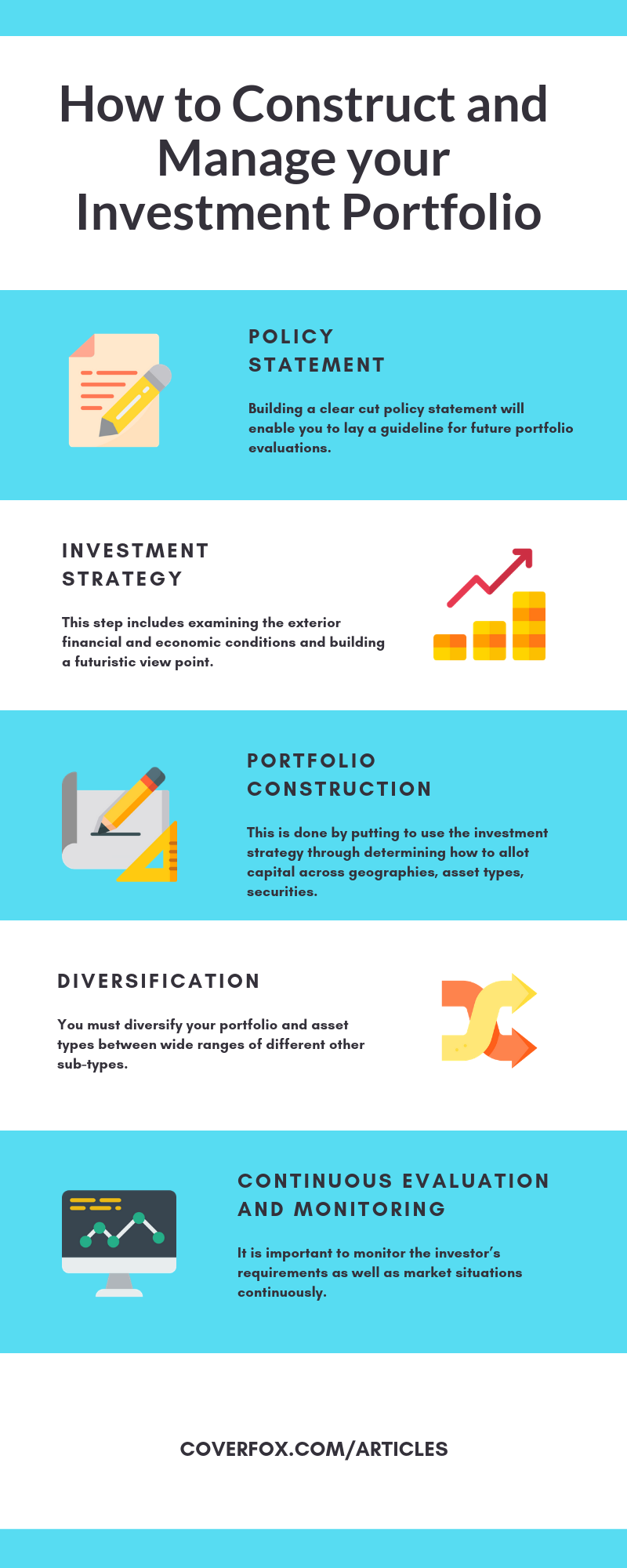Don’t know how to construct and manage your financial portfolio? These 4 simple steps will help you sail through your queries and concerns easily. Read on to know more.

If monetary decisions are not done systematically, administering and managing an involute investment portfolio is burdensome for individual investors. Investors that are often confused or clouded too much with particular questions, “When to buy or sell?” and “Which stock to buy?” this eventually leaves them with a portfolio that does not fulfil their monetary requirements.
Two extremely significant assortments have to be made, prior to creating an investment plan. They are cash reserve and insurance. Cash reserves are for covering living expenditures for some months in case of an uncalled situation like unemployment) and insurance refers to health insurances, life insurances and other general insurances.
After the cash reserve and insurances are acquired, you as an investor can design and manage your investment portfolio. You can do so by following four simple steps.
1. Policy statement
The first and foremost step that involves in the process of managing your portfolio is a policy statement construction. This policy statement will consist of details about how much and which kinds of risk the investor is ready to undertake. The main objective of this is for the understanding and articulation of investment goals and restrictions as precisely as possible. To build a policy statement that is clear and precise, a financial planner will insist you to think over your financial requirements for short-term, mid-term and long-term.
To construct the portfolio as per your needs, it is a significantly necessary step. A clear cut policy statement will enable you to lay a guideline for future portfolio evaluations. This is the way to map your success, by having a clear investment strategy.
Two things define what investment goals are. They are made of risks and returns. Risks are the chances the investor is ready to take, whereas returns are what the investor is expecting. Analysis regarding return expectations should be done after a vigilant study of the investor’s choice of risks.
There are various types of investment restrictions or constraints. They include liquidity requirements, tax concerns, time bound, personal preferences and unique requirements that are a result of personal situations.
2. Investment strategy
The second most significant step includes examining the exterior financial and economic conditions and building a futuristic view point. What eventually decides the investment strategy are these assessments with the examining of the needs of the investor.
Applicable changes need to be done in the portfolio, since the market is subject to changes over time. Hence, they need to be monitored closely. This not only helps in making rational investment goals but also portray accurate future expectations.
3. Portfolio construction
The third step is the construction of the portfolio. Primarily, the main aim of the portfolio construction is to meet the financial requirements of the investor by taking the most minimal amount of risk.
Portfolio construction is done by putting to use the investment strategy through determining how to allot capital across geographies, asset types for example equities, debt, gold, etc. and securities like stocks and bonds.
Portfolio managers and investors can use various methods for the construction of portfolios. Traditional finance theory advises to construct an ideal portfolio, investors can choose and just focus on the returns and risks of different securities.
Since markets are efficient and it may not always be easy for investors to select a ‘winner’ stock, this approach generally advocates a greatly diversified portfolio. Another approach is very realistic in nature, specifically for upcoming markets that consist of prevalent market fatalities.
This approach includes a process that includes three steps- industry, macroeconomic and company analysis. There are alternatives of mutual funds and exchange traded funds for people who do not wish to undertake securities.
4. Continuous evaluation and monitoring
After the portfolio is constructed, it is important to monitor the investor’s requirements as well as market situations continuously. This is done to make considerable changes to the policy statement whenever required.
It is also equally significant to articulate the performance of the portfolio on the basis of risk-adjustment. Also, compare it to a suitable market touchstone. It is important for you as an investor to note that this is a process that never ceases.
You should evaluate it every now and then, at regular intervals. Most importantly to be sure that you and your changes are in sync with the markets expectation changes.
How to diversify your investment portfolio?
It is significantly important to maintain your diversification through your portfolio construction. You must be sure of diversifying your asset types between wide ranges of different other sub-types.
Investors can acquire extremely phenomenal diversification through mutual funds and Exchange Traded Funds. These are investment instruments or tools that enable individuals that are investors to receive economics of a large scale that huge fund managers relish. Generally, the common man would not be able to obtain this with a less amount of money.
How to future proof your investments?
In most cases, all investments are done to safeguard the future. It is wise to future proof all your investments whether it is for the purpose of saving for your retirement, family or simply increase your finances. You must seek for a complete plan, appropriate valuation, individual retirement accounts, less risks, higher returns, etc. Below are some points to make a note for the purpose of future proofing your investments:
- Investing into other mutual funds gives rise to your chances of receiving a stabilized income that you can rely on in the future.
- Individual retirement accounts offers a higher and stabilized income, since they are run by mutual fund brokerages.
- Evaluate vigilantly.
- Choose investments that offer reasonable returns for the money that you invest.
- Invest your money in a company that is seeking a good long tenure partnership, with a good team and that values integrity.
In conclusion, a sustainable and well maintained portfolio is important for any investor’s success. By constructing portfolios in line with investment strategies, you can be well protected and invested.
You can do so, by understanding and selecting your financial needs and tolerance of risk.
By selecting best investment options, ULIP plans, and diversifying products, you can create a good portfolio. By concluding the perfect asset placement, understanding whether you are a conservative investor or an aggressive investor, re-analysing your needs, etc. will give you a clarity on what exactly are your requirements and capabilities.
Here's a sneak peek into simple steps to build a healthy investment portfolio.

Recommended Read: Best Long Term and Short Term Investment Plans
